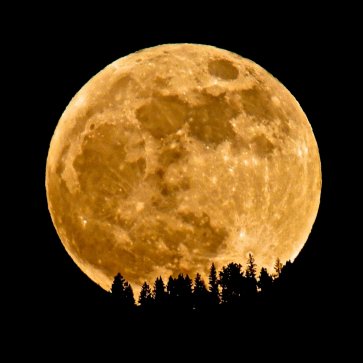
Observers are preparing for the “supermoon” as Earth’s satellite makes its closest approach since 1948.
Europe’s best chance to see it will be on Monday evening, November 14, although the Moon will be at its closest – only 221,524 miles away – at 11:21 GMT.
To viewers, the Moon will appear about 7% larger than normal and about 15% brighter – although the human eye is barely able to discern that difference.
Yet the Moon won’t be this close again until November 25, 2034.
As the Moon traces its orbit around the Earth, we see different proportions illuminated by the Sun. Once in each orbit, our satellite is totally illuminated – a full moon.
As the Moon orbits the Earth every 27 days or so, it travels in an elliptical or oval shape.
This means that its distance from our planet is not constant but varies across a full orbit.
Within this uneven orbit there are further variations caused by the Earth’s movements around the Sun.
These mean that the perigee – the closest approach – and full moon are not always in sync.
However, occasions when the perigee and full moon coincide have become known in popular parlance as supermoons.
To observers, the differences between a supermoon and a normal full moon are quite subtle.
Generally, supermoons can be up to 14% larger and 30% brighter, but only when compared with the furthest point the Moon gets to within its orbit.
